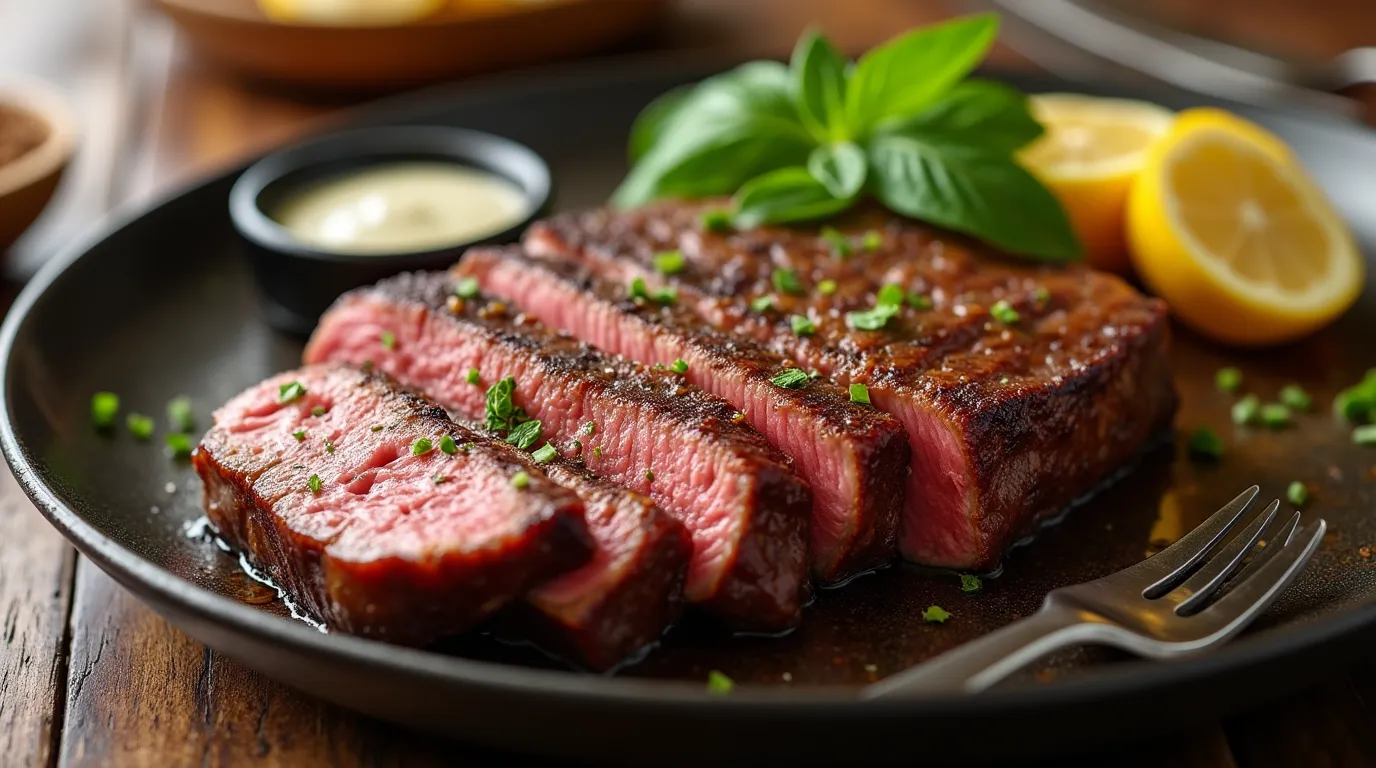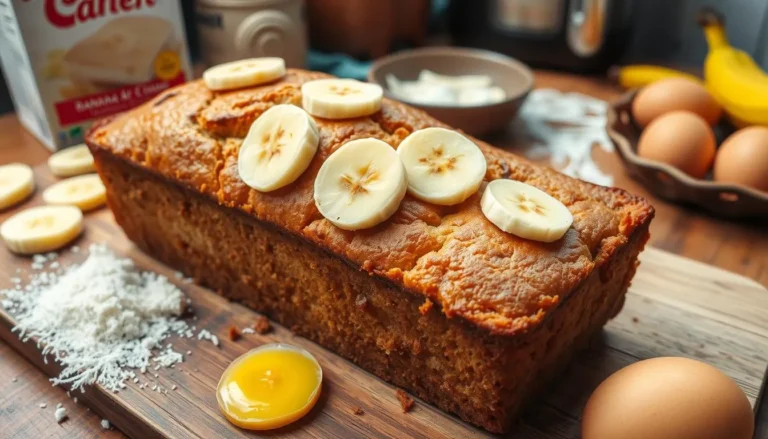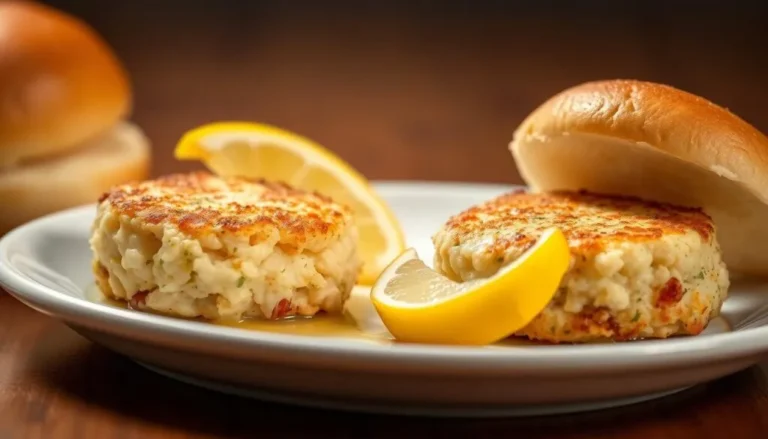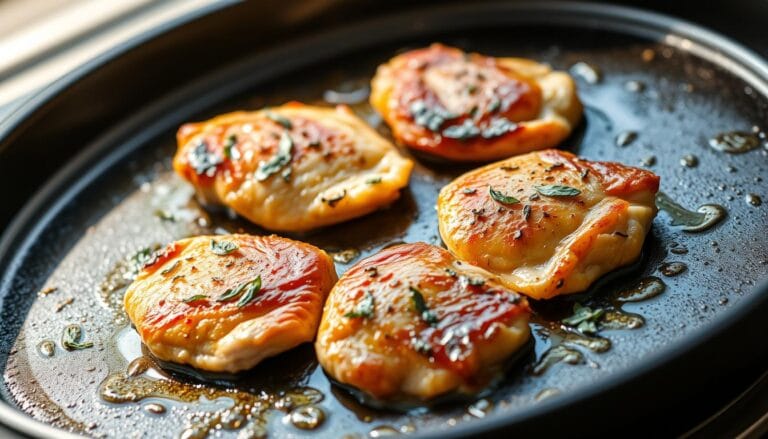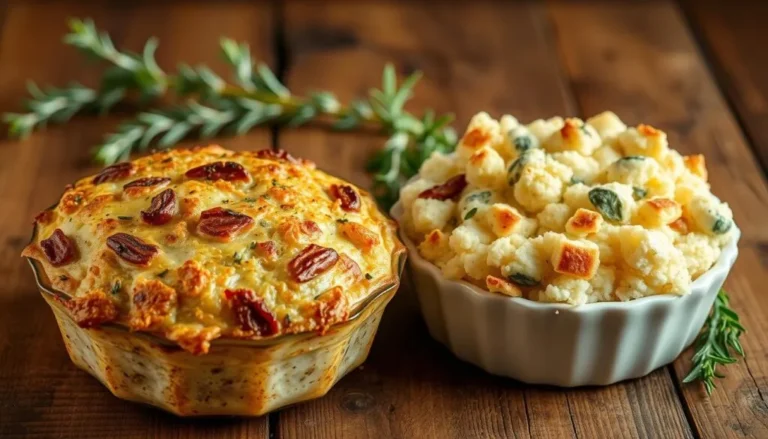Ribeye Roast Recipe
Table of Contents
When special occasions call for an impressive centerpiece, few dishes command attention like a perfectly cooked Ribeye Roast Recipe . Golden-brown on the outside, tender and juicy on the inside—this show-stopping cut of beef transforms any gathering into a memorable feast. Whether you’re hosting Christmas dinner, celebrating an anniversary, or simply treating loved ones to something extraordinary, mastering the art of the ribeye roast will elevate your culinary reputation to new heights.
Key Takeaways
Before diving into the details, here’s what makes a ribeye roast worthy of your holiday table:
A ribeye roast requires minimal active cooking time yet delivers maximum impact, making it perfect for busy holiday hosts.
With the right guidance, even novice cooks can prepare a restaurant-quality roast that will impress guests.
The versatility of this cut allows for customization based on preference, from rare to medium, and pairs beautifully with countless side dishes.
Investing in quality meat and proper preparation techniques ensures a buttery-tender, flavorful experience that creates lasting memories around your table.
Understanding Ribeye Roast vs Prime Rib
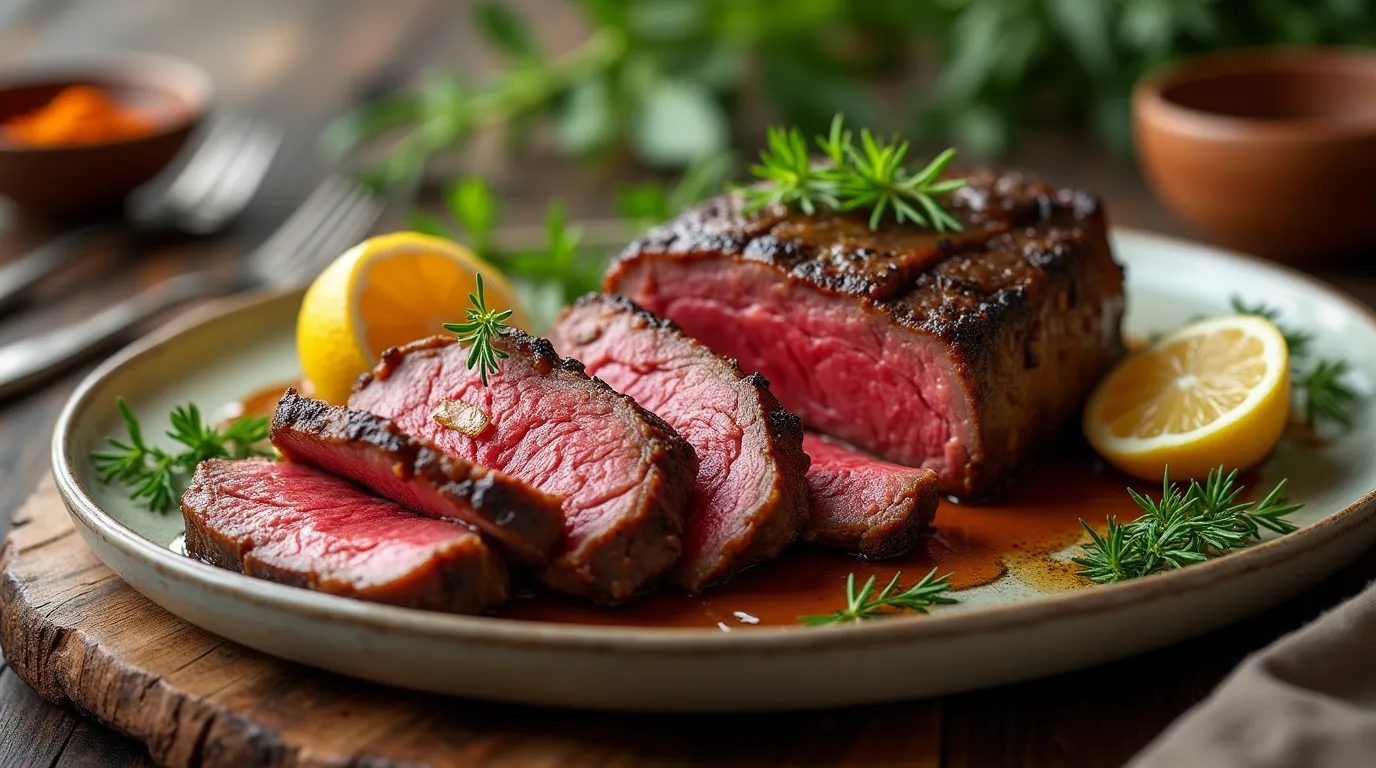
Many home cooks struggle with the distinction between these premium beef cuts. Both ribeye roast and prime rib come from the same primal section of the cow—the rib area—but they’re prepared and served differently.
What Makes Ribeye Roast Different
A ribeye roast is essentially the boneless version of prime rib. This distinction brings several advantages to your holiday cooking:
Faster cooking time: Without bones to insulate the meat, ribeye roasts cook more efficiently.
More pronounced crust development: The increased surface area allows for better seasoning contact and caramelization.
Easier carving: No bones means clean, presentation-worthy slices every time.
The coveted rib cap: This intensely marbled section remains intact, offering the most tender, flavorful bites in each serving.
Selecting the Perfect Cut
Your roast’s quality directly influences the final result on your holiday table. When shopping for a ribeye roast, consider these factors:
Color: Look for bright, cherry-red meat with clean, white fat. Avoid cuts with grayish tones or excessive browning, which may indicate age or improper storage.
Marbling: Those delicate white streaks throughout the meat aren’t just visually appealing—they’re flavor vehicles that melt during cooking, basting the meat from within and creating unmatched tenderness.
Size considerations: Plan for approximately ½ pound per person for boneless cuts, accounting for some shrinkage during cooking and the possibility of second helpings (which are practically guaranteed).
Fat distribution: An ideal ribeye roast features an even fat cap along one side and consistent marbling throughout the muscle.
Meat Grading and Quality Indicators
The USDA employs a grading system that helps consumers identify quality. For ribeye roasts, understanding these distinctions pays delicious dividends:
Prime: The gold standard, featuring abundant marbling from young, well-fed cattle. Only about 2-3% of beef achieves this distinction, making it somewhat rare in standard grocery stores.
Choice: Excellent quality with good marbling, widely available and offering an excellent balance of quality and value.
Select: Leaner with less marbling, requiring more careful cooking to avoid dryness.
While prime rib often commands premium prices, a well-selected ribeye roast can deliver comparable results at a more accessible price point. Both offer superior taste and tenderness compared to other beef cuts, particularly when prepared with care.
Essential Ingredients and Equipment
Creating the perfect ribeye roast requires relatively few ingredients but demands quality at every step.
Ingredients:
- 4-6 pound USDA Prime or Choice ribeye roast
- 8 tablespoons unsalted butter, softened
- 6-8 garlic cloves, minced
- 2 tablespoons kosher salt
- 1 tablespoon freshly ground black pepper
- 2 tablespoons fresh rosemary, chopped
- 2 tablespoons fresh thyme leaves
- 1 tablespoon olive oil
Equipment:
- Sturdy roasting pan with raised roasting rack
- Kitchen twine for trussing
- Reliable instant-read meat thermometer
- Sharp carving knife
- Large cutting board with juice groove
A high-quality meat thermometer is perhaps the most critical tool in roasting success. Even the most experienced chefs rely on thermometers rather than guesswork when preparing expensive cuts like ribeye roast.
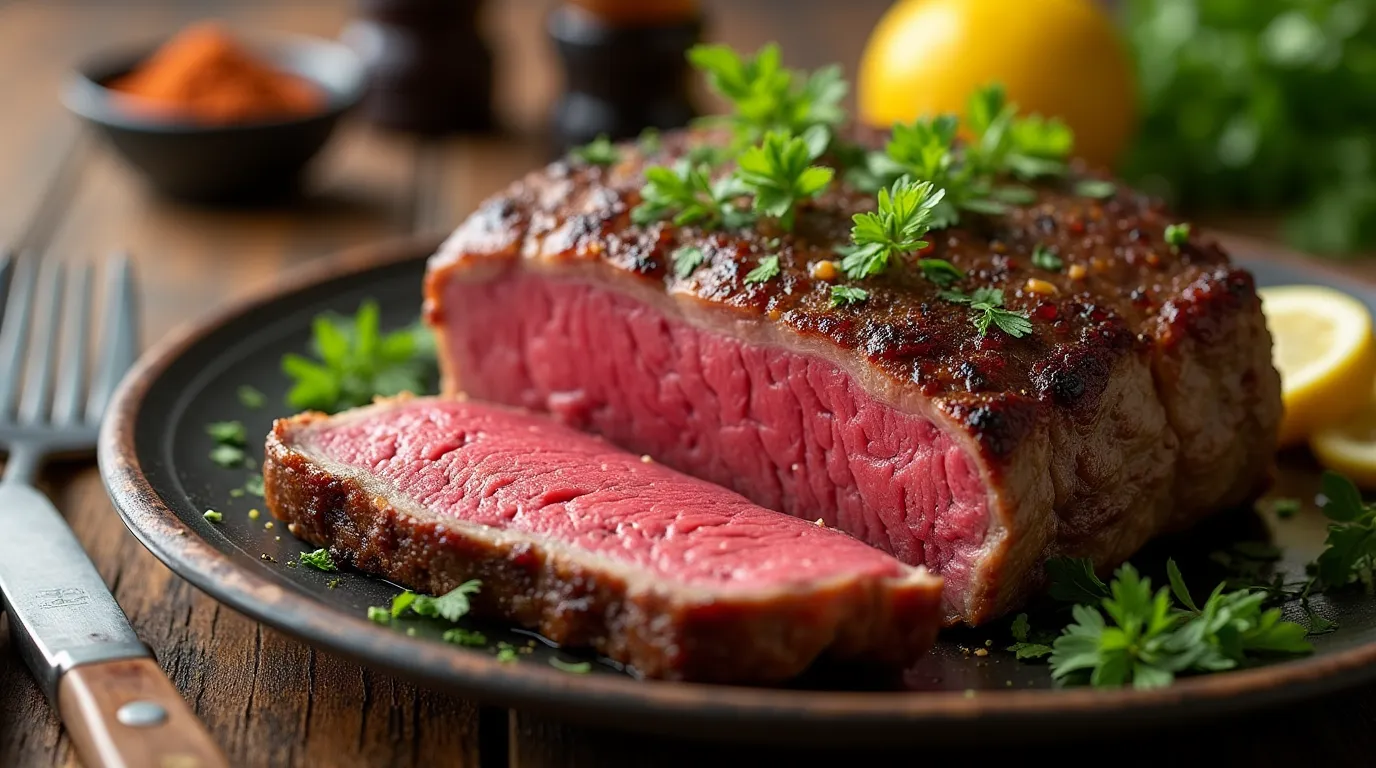
Preparing Your Ribeye Roast
The foundation of a memorable roast begins before it ever enters the oven. These preliminary steps make all the difference between good and extraordinary results.
Room Temperature Guidelines
Remove your roast from refrigeration 1-2 hours before cooking. This critical step allows the meat to warm evenly, promoting uniform cooking from edge to center. A cold roast placed directly in the oven often results in overcooked exterior and undercooked interior—a disappointment no holiday host wants to face.
Trimming and Tying Techniques
While some fat enhances flavor, excessive fat can lead to flare-ups and uneven cooking. Trim the fat cap to approximately ¼-inch thickness, leaving enough to baste the meat naturally while cooking.
Secure your roast with kitchen twine at 1-inch intervals. This simple step maintains the roast’s shape throughout cooking, ensuring even heat distribution and a picture-perfect presentation when sliced. The twine should be firm enough to hold the roast together but not so tight that it cuts into the meat.
Seasoning Methods
The ribeye’s natural richness provides an excellent foundation for various seasoning approaches:
Basic seasoning: Nothing showcases quality beef like the classic combination of kosher salt and freshly ground black pepper applied generously 45 minutes before cooking.
Dry rub: For bolder flavor, create a mixture of salt, pepper, garlic powder, dried herbs, and a touch of paprika.
Herb butter: For luxurious results, a compound butter infused with fresh herbs and garlic creates an incredible crust while keeping the meat succulent.
The Perfect Garlic Herb Butter Rub
The secret weapon in many professional kitchens, herb butter elevates a good roast to unforgettable status. Here’s how to create this flavor powerhouse:
Combine softened butter with minced garlic, chopped fresh rosemary, thyme, salt, and pepper. Work these ingredients together until thoroughly combined, then massage this mixture all over your room-temperature roast. The butter serves multiple purposes: it adheres seasonings to the meat, creates a mouthwatering crust during cooking, and keeps the roast moist throughout the cooking process.
Ribeye Roast Recipe
Now for the main event—turning raw ingredients into the centerpiece of your holiday memories.
Base Ingredients List
- 1 (4-6 pound) ribeye roast
- Garlic herb butter mixture (from above)
- 1 tablespoon olive oil
- Additional kosher salt and black pepper to taste
Step-by-Step Instructions
- Preheat your oven to 450°F (232°C).
- Pat the roast dry with paper towels to remove excess moisture, which helps develop a better crust.
- Apply the garlic herb butter mixture generously over the entire surface of the roast.
- Place the roast fat-side up on the roasting rack within your roasting pan.
- Insert a meat thermometer into the thickest part of the roast, avoiding fat pockets or touching the pan.
- Sear the roast in the preheated oven for 15 minutes to develop a flavorful crust.
- Without opening the oven, reduce temperature to 325°F (163°C) and continue roasting until the internal temperature reaches your desired doneness (see temperature guide below).
- Remove from oven and transfer to a cutting board, covering loosely with foil.
- Allow the roast to rest for 15-30 minutes before carving to ensure optimal juiciness.
- Slice against the grain into ½-inch thick portions and serve with collected au jus.
Cooking Times and Temperatures
While timing varies based on roast size and oven accuracy, here are general guidelines:
- Rare: 120-125°F (49-52°C) internal temperature
- Medium-rare: 130-135°F (54-57°C) internal temperature
- Medium: 140-145°F (60-63°C) internal temperature
Expect approximately 15-17 minutes per pound for medium-rare results, but always prioritize internal temperature readings over timing. Remember that your roast will continue cooking during the resting period, increasing internal temperature by 5-10 degrees.
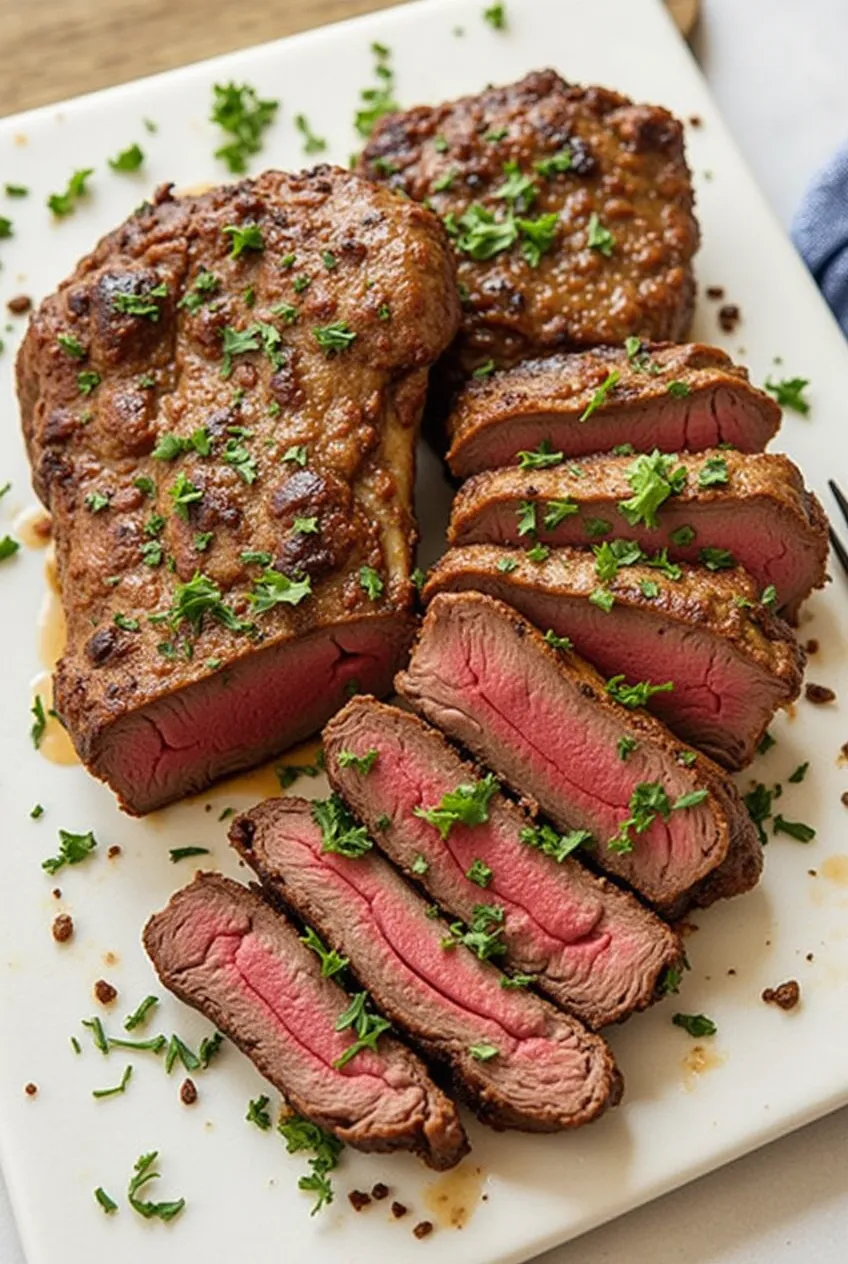
Mastering the Reverse Sear Method
For those seeking the pinnacle of roasting perfection, consider the reverse sear approach. This method flips traditional roasting on its head with remarkable results:
- Start by roasting at a low temperature (250°F/121°C) until the internal temperature reaches about 10-15 degrees below your target.
- Remove the roast and let it rest while increasing oven temperature to maximum (500°F/260°C or higher).
- Return the roast to the blazing hot oven for 5-10 minutes to develop an exceptional crust.
The advantages include unparalleled edge-to-edge consistency, superior moisture retention, and a pronounced, flavorful crust that will draw compliments from even the most discerning guests.
Temperature Guide for Different Doneness Levels
Mastering Your Meat Thermometer
Insert the probe into the thickest part of the roast without touching bone or the roasting pan. For digital models, ensure the readout is visible without opening the oven, which releases valuable heat.
Internal Temperature Chart
- Blue/Very Rare: 115-120°F (46-49°C)
- Rare: 120-125°F (49-52°C)
- Medium-Rare: 130-135°F (54-57°C)
- Medium: 140-145°F (60-63°C)
- Medium-Well: 150-155°F (66-68°C)
- Well Done: 160°F (71°C) and above
Carryover Cooking Insights
The phenomenon known as carryover cooking means your roast continues cooking after leaving the oven. Remove your roast approximately 5-10°F below your target temperature to account for this increase during resting.
Resting and Carving Techniques
Never skip the resting period—it’s as crucial as cooking itself. During resting, muscle fibers relax and reabsorb juices, resulting in slices that remain moist on the plate rather than losing precious flavor to the cutting board.
For optimal results, rest your roast for at least 15 minutes, and up to 30 minutes for larger cuts. Cover loosely with foil to retain warmth without trapping steam, which could soften your carefully developed crust.
When carving, identify the direction of the meat grain and slice perpendicular to it. This technique shortens muscle fibers, maximizing tenderness with each bite. Keep slices uniformly thick (approximately ½-inch) for the most appealing presentation.
Making the Perfect Au Jus
Collecting Delicious Pan Drippings
After removing your roast, preserve those golden-brown bits and collected juices in the roasting pan—they contain concentrated flavor that forms the foundation of exceptional au jus.
Seasoning and Serving Your Au Jus
In the roasting pan, combine drippings with:
- 1 cup beef broth
- 2 teaspoons Worcestershire sauce
- ¼ cup dry red wine (optional)
Simmer while scraping up browned bits, then strain through a fine-mesh sieve for silky consistency. Serve alongside sliced roast in a warm gravy boat.
Side Dish Pairings and Serving Suggestions
Complement your masterpiece with sides that enhance without overshadowing:
- Crisp-tender roasted vegetables (asparagus, carrots, Brussels sprouts)
- Creamy mashed potatoes or decadent potato gratin
- Yorkshire pudding for traditional appeal
- Fresh green salad with light vinaigrette to balance richness
- Crusty artisan bread for capturing extra au jus
FAQ
What’s the difference between ribeye roast and standing rib roast? Standing rib roast (prime rib) includes the bones, while ribeye roast is the same cut with bones removed.
Do I need to use a meat thermometer? Absolutely—it’s the only reliable way to achieve your desired doneness without cutting into the roast.
Can I prepare the roast the day before cooking? Yes! Season and prepare your roast up to 24 hours in advance, keeping it uncovered in the refrigerator to develop flavor and dry the exterior for better browning.
How long should I let the roast come to room temperature? For optimal results, allow 1-2 hours depending on size.
With these techniques in your culinary arsenal, your ribeye roast will become the stuff of family legend—the dish that transforms ordinary gatherings into extraordinary celebrations.

